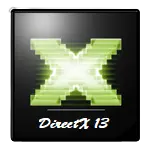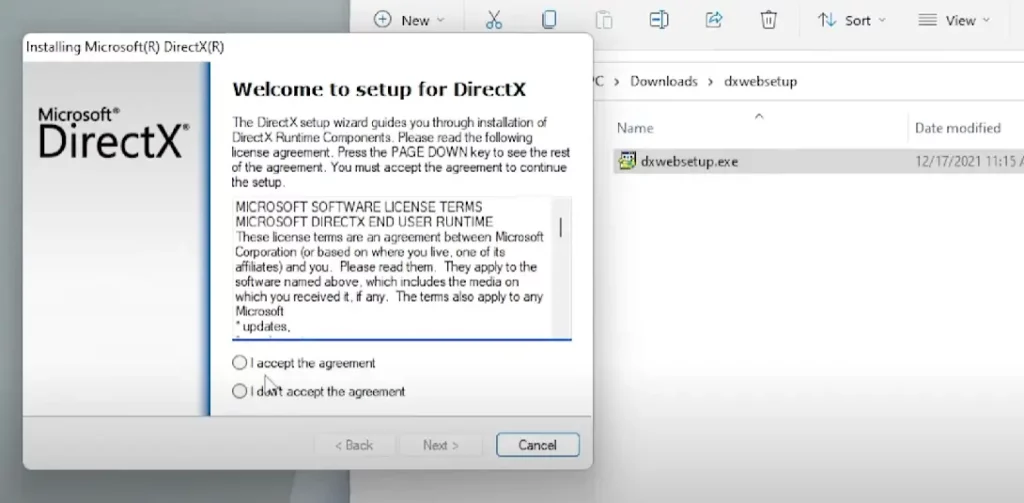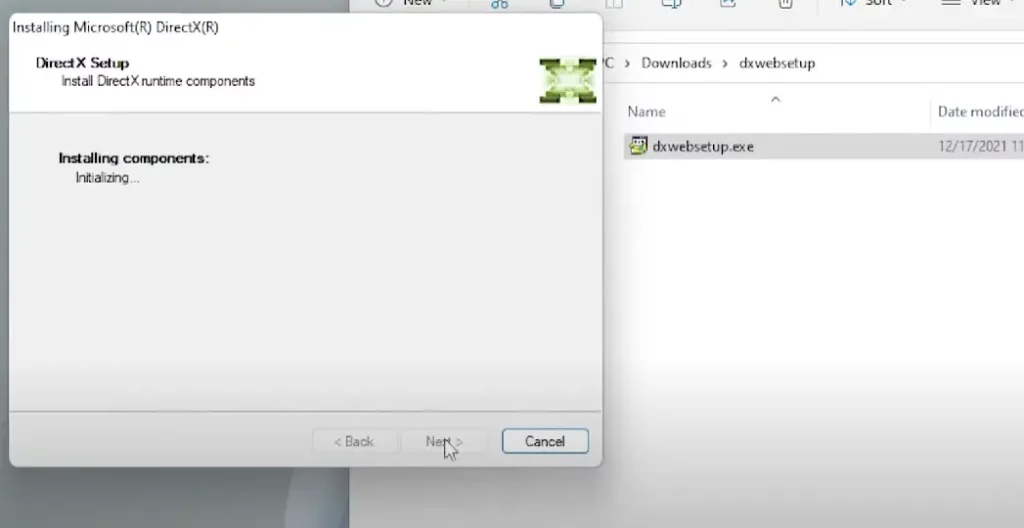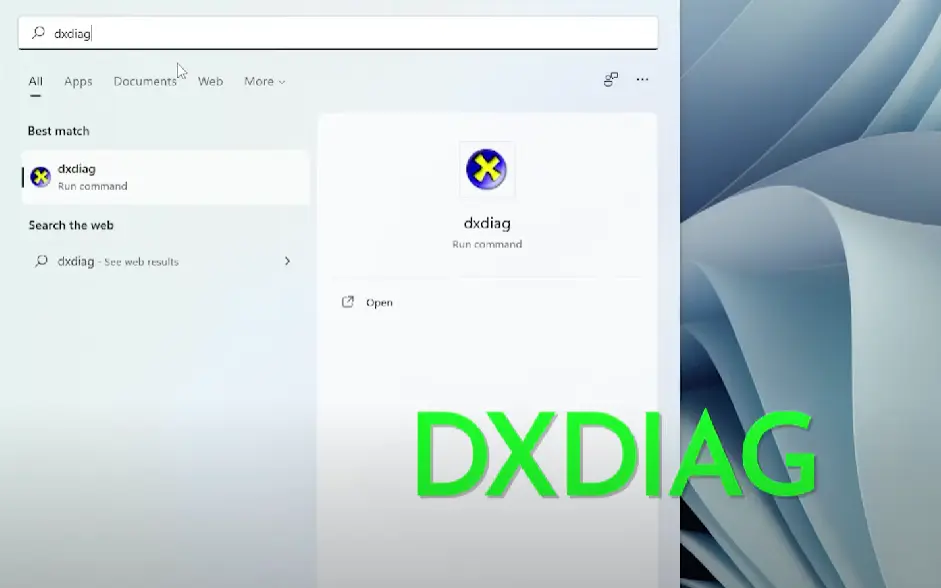DirectX 13
Download latest version of DirectX 13 for windows
Before talking about the future, let us first know about APIs, because this term will be used to understand DirectX. DirectX evolves over time and the latest version is available here. it enables efficient communication between software and hardware components, optimizing performance and enhancing the gaming experience.
The name of the API, which all began with “Direct,” is why it is named DirectX. Now, talking about what it is,? It is especially used for multimedia tasks, game programming and video editing. It is the set of APIs that helps to perform the program efficiently.
What is DirectX 13 ?
It is used for heavy task processing on the PC, such as playing high-graphics game, programming for games, multimedia tasks, etc. With the collection of information and commands in the form of APIs, it communicates with the hardware to manage the processing speed in an efficient way.
Known for providing the best experience with high-processing tasks such as gaming and multimedia tasking,. Developers don’t need to panic as this version has all the pre-existing tools, such as time-saving middleware. Game development is accelerated and made easy, which allows more developers to transcribe their skills into their games. Expanded, much more advanced features enable realistic lighting, shadow, and reflection effects. Improved performance with optimized image quality, variable rate shattering,
Having more capabilities to display rich results in full HD multimedia graphics, 3D animation, and crystal clear audio.
Why DirectX 13 on Win7, 10,11?
it serves as a APIs that provide developers with a unified platform to create cutting-edge graphics.
DirectX 13 is a crucial component for gamers and multimedia enthusiasts. DX 13 includes APIs for graphics, audio, input and other multimedia-related tasks. it has evolved to keep up with advancements in hardware technology and meet the increasing demands of gamming applications.
Latest Version of DirectX 13 for Windows 7, 10, 11
It is an updated version of the previous software. Made by Microsoft, this version is an improvement from its older one, with the support of a hardware-accelerated programming model for 3D graphics applications. Most gamers were keen on this version as it provided more features than before. Including the security along with upgraded features across all technologies, which are accessed by the DirectX APIs.
The latest version comes with Windows updates. Hardware-accelerated ray tracing, variable rate shading, and boost performance are given to this version with various optimizations to the window.
DirectX 13 Overview
Let’s take a quick journey about versions of DirectX:
DX 1: The inaugural release of DirectX laid the foundation for future advancements in graphics and multimedia.
DX 9: This version marked a significant milestone with the introduction of programmable shaders, enabling developers to create visually stunning effects and realistic graphics.
DX 11: introduced new features like multithreading support and improved shader capabilities.
DX 12: The revolutionized way games offering reduced CPU overhead, improved performance and enhanced visual effects.
DX 13: includes advanced audio processing capabilities, enabling immersive soundscapes and spatial audio for a more realistic and attractive audio experience. it designed to leverage the capabilities of modern hardware and deliver cutting-edge performance.
System Requirements for DX 13
it is expected that DirectX 13 will require a compatible Windows operating system and hardware that meets the recommended specifications for optimal performance.
Windows pc
Windows Vista, 7, 8, 10, 11 with 64-bit or 32-bit versions
RAM
minimum RAM memory requirement: 1 GB
processor
minimum processor required 1.5 GHz
Features of DirectX 13
- Ray Tracing: DX 13 incorporates real-time ray tracing technology, which enables accurate rendering of lighting, reflections and shadows, resulting in more realistic and visually stunning graphics.
- Variable Rate Shading (VRS): VRS allows developers to allocate GPU resources more efficiently by adjusting the shading rate dynamically. This improves performance without compromising visual quality.
- DirectStorage: DirectStorage reduces load times by enabling games to directly access and load assets from fast storage devices, minimizing the impact of traditional storage full.
- Enhanced Visuals: DX 13’s advanced rendering techniques, such as ray tracing and variable rate shading, elevate the visual quality of games, making them more immersive and lifelike.
- Improved Performance: With optimizations in resource management and processing techniques, it enables games to run smoother and perform better on modern hardware configurations.
- Efficient Asset Loading: DirectStorage reduces load times and allows games to take advantage of fast storage devices, resulting in quicker level loading and seamless gameplay experiences.
- DirectX 13 maintains backward compatibility with previous versions, ensuring that existing DX 12 and DX 11 titles can still run seamlessly on systems with DX 13 installed. Furthermore, the improved performance and optimized resource utilization of it enable developers to create more demanding and visually impressive games without sacrificing smooth gameplay.
- DirectX 13’s capabilities extend beyond gaming. Its advanced graphics and audio features can also enhance multimedia applications, virtual reality experiences and architectural visualizations. Industries such as entertainment, education, design and simulation can leverage DX 13 to create engaging and realistic content.
DirectX 13 vs. Previous Versions
It introduces revolutionary technologies like real-time ray tracing, which were previously limited to high-end rendering workstations. Developers can now harness these capabilities to create games and applications that rival the visual quality of blockbuster movies.
How to Download DirectX 13?

Step 1: Search on Google “Direcx13.com Download”.
Step 2: Visit DirectX13.com website to download.
Step 3: Click on download button of Direct X13 and Read carefully about installation process.
Step 4: After downloaded file, double click on file to start installation process.
How to install DirectX 13 on windows pc?
The setup wizard will guide you through the installation steps.
Step 1: Choose “i accept the agreement” and click next.

Step 2: installation complete click on finish button.

Step 3: Type on search of your pc “dxdiag” to Verify DirectX Installation.

Step 4: After successfully installing DX 13 (once it becomes available), you can verify the installation to ensure it is working correctly.
What to expect in DirectX 13?
⦁ The latest version will have the option of “Programmable Shaders,” which are used for rendering, lighting effects, and physics simulation.
⦁ It will increase the use of the CPU’s processing power, which will lead to better performance in the game.
⦁ Capable of supporting HTC ( Heterogeneous computing )
⦁ Gives an extra push on the multi-threading, which can be used on most of the games.
⦁ The feature “Programmable shaders” have it as a built-in. It used to improve
⦁ With the latest version, Microsoft aims to modify and enhance the video, graphics, 3D processing engine in windows.
PROS
- Advanced rendering techniques for more realistic graphics.
- Variable Rate Shading
- Enhanced the hardware resources
- Multi-GPU support
- Power efficiency improved the gaming experience.
- Improved overall performance and efficiency.
Cons
- Requires latest hardware, i.e. GPU and CPU
- Only available for updated windows.
- Perform based on the specification of hardware configuration
Troubleshooting DirectX Issues
- Direct X-related issues can sometimes occur, such as compatibility problems or missing DLL files.
- If you encounter any problems with Direct X, Microsoft provides a Direct X End-User Runtime Web Installer that can help resolve common issues.
- Outdated Direct X installations can often lead to compatibility issues and errors.
- Updating Direct X can resolve many common issues and improve overall system performance.
Sometimes DirectX errors keep occurring on the PC, but don’t worry. We brought some troubleshooting solutions for the errors.
1. Run DirectX Giagnostic tool (DxDiag)
- first go to search box type run, open it and then type dxdiag
- Under the System tab, check whether it is latest version or not
- Now go to Display section on the same tab, and look to the note box whether it detection any problem or not.
2. Update Windows to the latest version
Window update can help for your system issues. To update your window to latest version go to windows update of your computer and click on “Check for update” button. window will automatically update after sometime.
3. Update the graphic driver
- Make sure that you are using the recent graphics driver version. One of the main reason for the error can be due to old graphic driver, you can update the drivers, may be it help, to update follow the steps:
- Open the run box type devmgmt.msc and press enter you will go to device manager.
- click to the Display adapters, right click to the graphic card and choose update driver.
4. Clean boot
- Doing the clean boot in window may help. It will solve the software conflicts. To perform clean boot, follow the steps:
- type msconfig in the Run box
- Click on service tab. Check mark the “Hide All Microsoft Services” box.
- Click on “Disable all” button, and click “Apply”
- Open the “Task Manager” select the first enabled application and click “Disable”. Now you need to disable all enabled application one by one. After disable all programs, close task manager and click OK.
5. Run System File checker
- Running the system file checker can resolve the error. To do so,
- open command prompt, type ” sfc/scannow ” , press enter. Then you can check whether error solved or not.
- we hope that above all fixed the error and still you facing the issue then reinstall the window, it will help.
FAQ
Conclusion
In conclusion, DirectX is a vital component for multimedia tasks on Windows PCs, particularly for gamers. Direct X 13 represents a major milestone in the evolution of multimedia technology. DX 13 also opens new doors for multimedia applications beyond gaming, ensuring that the future of interactive entertainment remains exciting and engaging. Direct X 13 is not currently available, so there is no official download source. Microsoft typically releases DX updates through Windows Update or as part of major Windows releases. Trademark notice : This web site and/or material is not affiliated with, endorsed by, or sponsored by microsoft and registered trademarks of (NVIDIA Corporation) This webpage is for educational purposes only.
